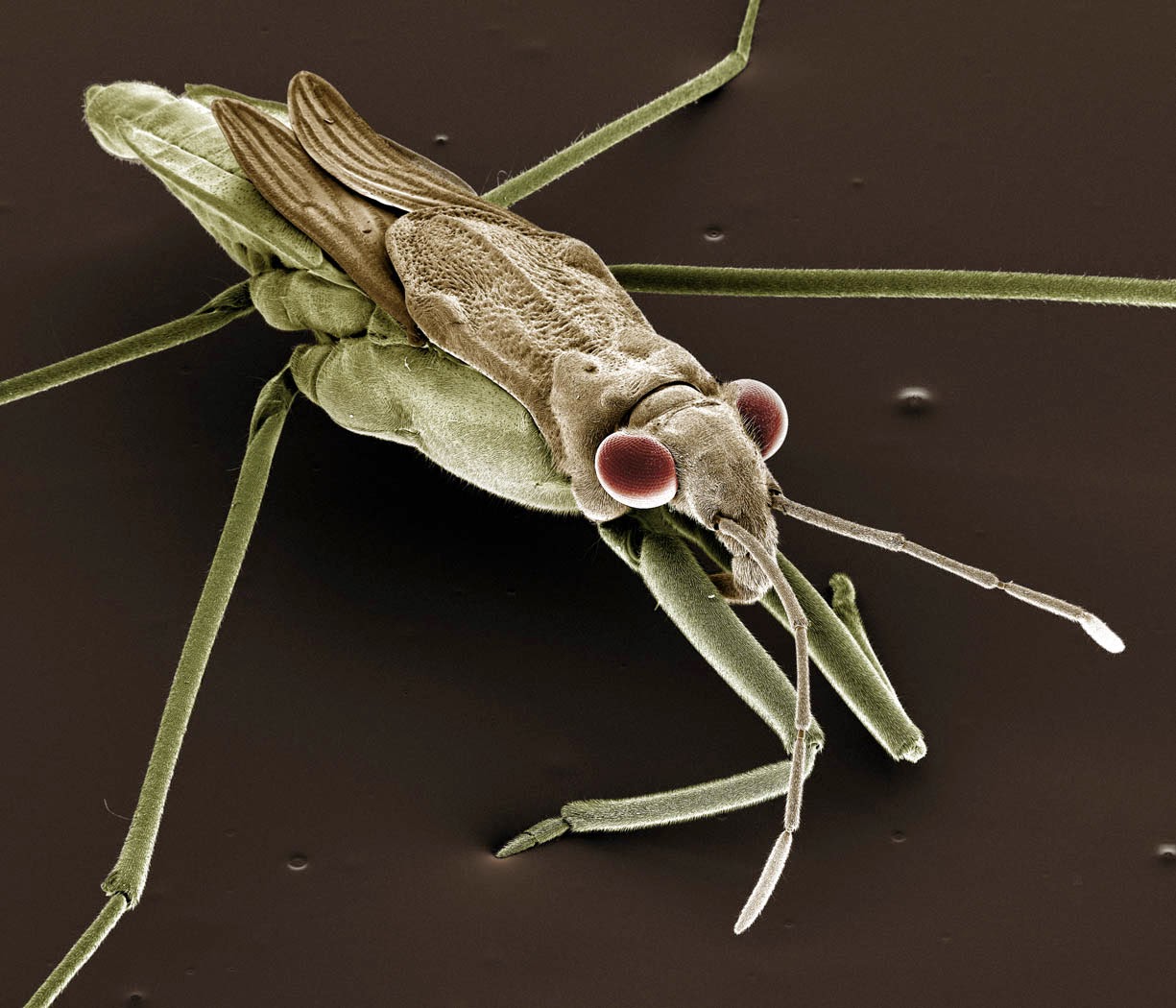Fascinating and fun: the OVA-Fairlynch joint talks

The common pond skater (Gerris lacustris)
Image credit: David Spears
David Spears It was a privilege on Saturday 7 February to hear two distinguished experts who are noted for their stunning images of wildlife.

A century and a half ago the Budleigh-born scientist and
microscopist Henry John Carter FRS, pictured above, settled in retirement at what is now Umbrella
Cottage on Fore Street Hill. Part of his retirement was spent identifying
creepy crawlies that he found in local drains and bogs.
Microphotography was
not available, but the drawings that he made of the tiny creatures that he
observed astonished the Victorian public.
Some of Henry Carter's microscopic drawings, as reproduced in an 1869 edition of the Annals and Magazine of Natural History
Carter would have been staggered and delighted by the
images that David creates, using modern high-powered electron microscopes, as seen in this photo of a tadpole.
From
award-winning photos of tiny amoeba to the smaller aquatic vertebrates, many of
them found in the River Otter, his riveting talk took us through nature’s food
chain with all its predators and victims.
Daphnia pulex Image credit: Paul Hebert
We were shown bacteria which live on decaying leaves,
pond skaters which feed on daphnia, water boatmen which suck the juices out of
tadpoles — even a dragonfly swallowing a fish. We learnt about blue-green algae
and the difference between malarial and non-malarial mosquitos.
Image credit: The Natural History Museum
David’s passion for his subject came across clearly. Like
Carter he had been charmed by the beauty of his subjects: he enthused about the
intricate jewel-like workmanship of “pretty diatoms” and the fascinating lives
of vorticella — “very interesting little chaps” which behave like jellyfish.
Vorticella attached to a spirogyra
Image credit: Keeblur
For those members of the audience tempted to try and
emulate David’s achievements he gave encouraging hints that microphotography
was not beyond the reach of the average pond-dipper, occasionally mentioning
equipment that he had “picked up on Ebay.”
Atlantic Puffin (Fratercula arctica)
Image credit: Boaworm
The second speaker, Mike Langman, is equally passionate
about birds. He worked for the Royal Society for the Protection of Birds (RSPB)
at their headquarters in Bedfordshire, for nine years after he left art college
in 1983. His bird illustrations can be seen in nearly every RSPB reserve. His
work has been published in over 50 books and regularly appears in all of the
UK’s birdwatching magazines.
Mike’s talk was a more interactive presentation than the
previous speaker’s, and had an amusing touch of the showman about it: mid-way
through his opening introduction his mobile rang. For quite a few seconds I was
taken in as I listened to a ‘conversation’ between Mike and his Auntie Flo
about a bird that she had spotted. Later during the talk he asked the audience
for a volunteer to stand out in front and draw a puffin, based on descriptive
details that we did our best to provide.
Blue tit (Cyanistes caeruleus)
Image credit: Dave Croker
“How well do you know your common birds?” was another
test which we were faced with. I felt I
should have known better the difference between a blue tit and a coal tit.
Still, nobody in the audience scored 100% when Mike asked
us to draw the markings on a badger’s head.
Coal tit (Periparus ater)
Image credit: nottsexminer
There were plenty of wonderful photographs of birds.
Trying to spot a Mediterranean gull in a flock of black-headed gulls and a
goose in a gathering of swans were further tests where some did surprising well
and others did dismally.
The lessons from all this fun and games were clear: it’s
all about observation when you’re trying to identify our feathered friends. And
drawing, rather than photography, is the answer. The digital camera, clever though it may be,
is no substitute for binoculars, sketching and notes.
Both David and Mike showed us early pictures of their
work from the time when, as youngsters, they were experimenting with microscopy
and sketchpads. Which left me feeling rather sad I didn’t spot a single young
person in an audience with an average age of 60. It was Saturday morning. I
wondered how many teachers had recommended these two excellent talks to the
aspiring naturalists, film-makers and artists that we hope our schools will
produce.

.jpg)





.jpg)



Comments
Post a Comment